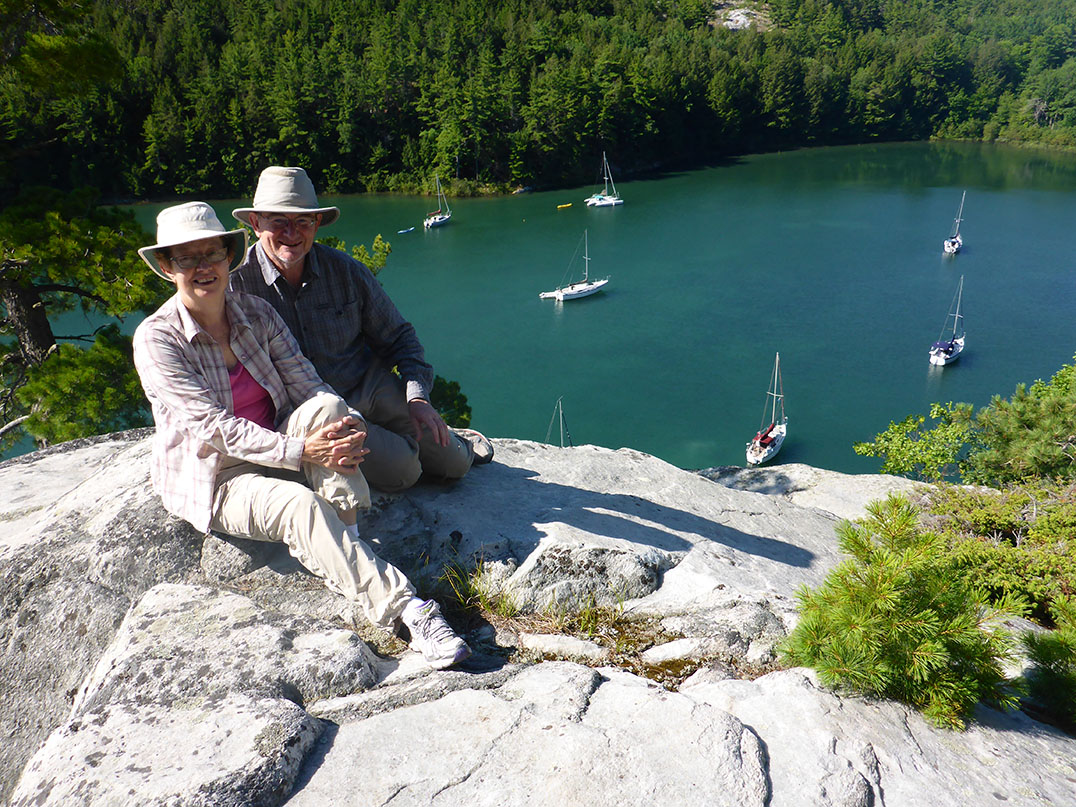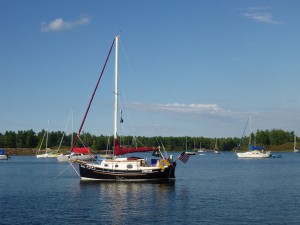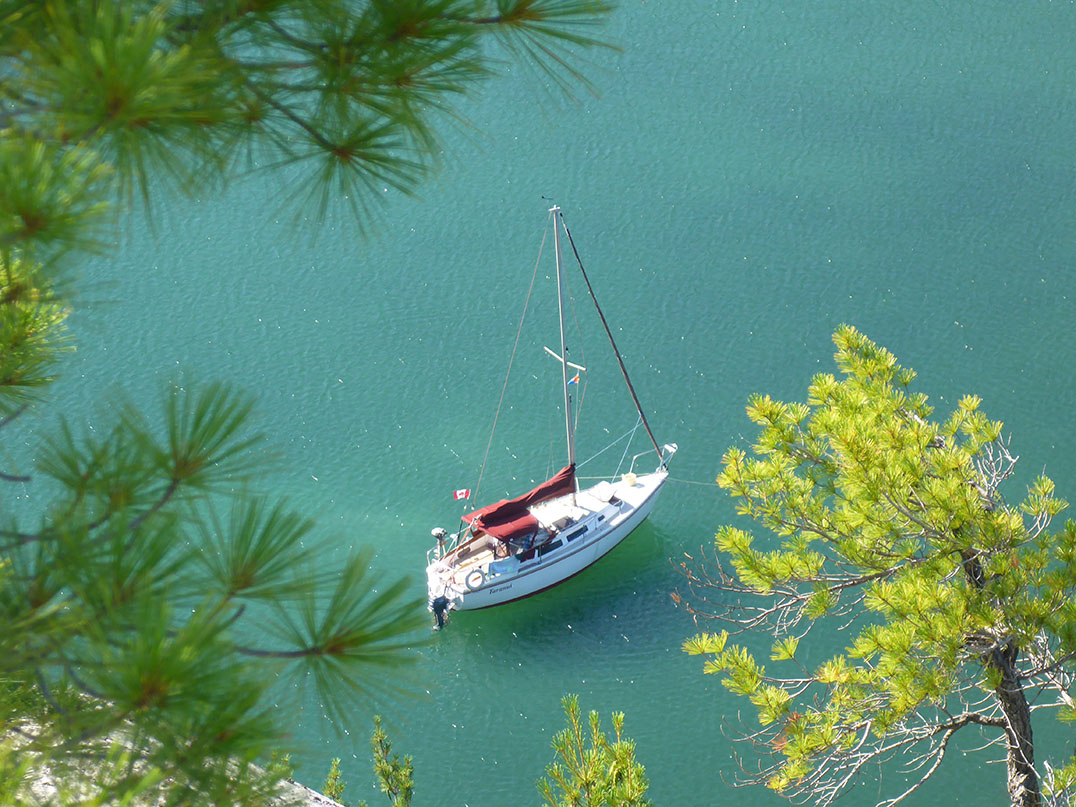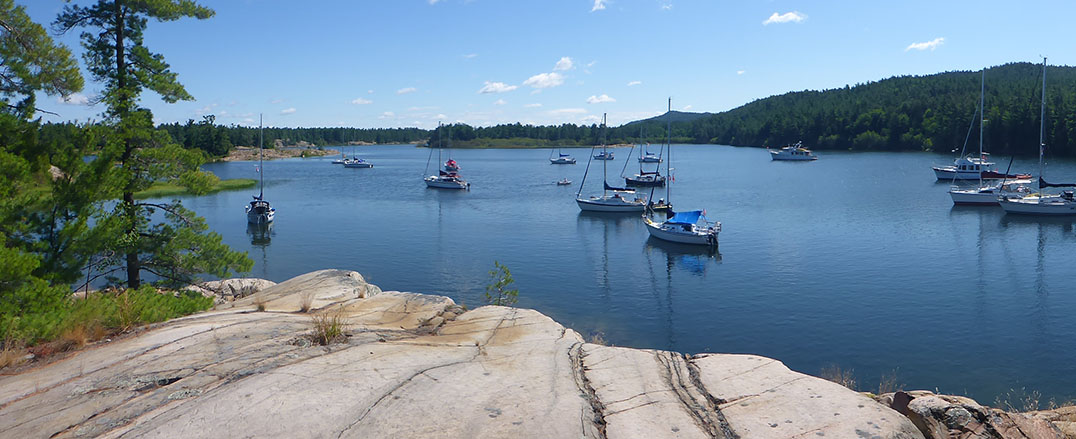MANITOULIN—The North Channel Marine Tourism Council proudly brands the waters of the North Channel as “the best freshwater boating in the world” and the members of the Trailer/Sailors Association heartily agree.
“We are definitely ambassadors for the North Channel,” said John Clement who, along with his wife Irene, paused in the de-rigging of their 26-foot sailboat Taranui to discuss the Trailer/Sailor organization, sailing the North Channel waters and the community of fellow travellers who spend two weeks every year exploring the thousands of coves and Islands for which the region is justly famed.

John is a former president of the organization, having joined in 1990 (the organization itself was founded just five years earlier in 1985) and his wife was one of the co-organizers (along with Diana Nelson) of this year’s trailer/sailor cruise. The organization began with a half-dozen to a dozen like minded souls who joined forces to explore North Channel waters.
“We joined in 1990 and we have been coming most years ever since,” said Mr. Clement. “I ran five of the cruises, then Mike Nelson took it on and Diana Nelson took it on after him.”
The Clements began sailing in small dinghies when they were younger, but with the advent of their children they realized they needed something more substantial.

“With small children you need to be able to anchor so they can go ashore, go swimming and it is good to have a boat big enough to be able to have some space below,” said Ms. Clement. “The kids need to go ashore sometimes.”
“So that is what trailer sailors did, anchor, go ashore to go blueberry picking and explore in little dingies,” agreed Mr. Clement.
Since trailer/sailors tend to smaller boats, usually from 16 to 25-foot vessels that fit easily on trailers, they tend to have more limited space for supplies and amenities. “We plan every three days to be in a marina where we can pump out the head (toilet tanks), pick up ice, get an ice cream,” said Mr. Clement. “Oh we like the ice cream,” laughed Ms. Clement, “in fact we will probably go and get one after we are finishing de-rigging this afternoon.”
It takes about three hours to take down the rigging and mast on a small sailboat, between two and four, depending on the winds.
The amenities onboard a trailer sailor’s vessel can vary widely, largely dependant on the character of the boat and its owners. The Clement’s Taranui is at the large end of the trailered sailboats in the association, and their vessel even sports a wood burning stove. “That’s pretty unusual,” said Ms. Clement. “This was a boat-builder’s boat. Not all boats have refrigeration, some people choose to do without, but we like cheese and milk.”
The key element that attracts trailer sailors to the lifestyle, however, is the deep sense of community they enjoy, whether newcomers or long time veterans. “Whether it is their first time or 20 years, there is a friendship link,” said Mr. Clement. “The mood has always been the same—an extended family.”
The sailors tend to keep together while sailing the waters of the North Channel, providing mutual support and camaraderie and engaging in group social events. “We might select a flat rock and say that is where we will hold a potluck at 6 o’clock,” said Ms. Clement. The sailors will return to their boats to create a dish and meet together at the appointed time on the selected ‘flat rock.’ “We had a pancake breakfast one morning,” noted Ms. Clement.
The group will hold a layday, a two-night stay in one location to provide for better opportunities to socialize and build the sense of community that holds them together.

Most of the trailer sailors have a wide and eclectic skill set. “If someone has an issue with their boat or some piece of equipment, someone will know how to juryrig a solution and someone else will have the parts,” said Mr. Clement.
The Trailer/Sailor Association logo is a stylized combination of a boat in the water and on a trailer. “Half in the water and half out,” said Mr. Clement.
Cruiser’s Net founder and operator Roy Eaton holds a special place of honour amongst the trailer sailor community, noted the couple. “Roy is a life member because of all that he does for the boating community,” said Ms. Clement.
Kelly O’Hare and the catering staff of the Anchor Inn Hotel are also held in high esteem by the group. “We have a half point dinner hosted by the Anchor Inn where we have 60 people at the pavilion on the docks in Little Current,” said Mr. Clement. “Kelly and her staff have been wonderful.”
Another popular food oriented event is the pizza party that takes place when the vessels are being rigged to begin the cruise. “We order 22 pizzas from 3 Cows and a Cone,” said Ms. Clement. “They are good pizzas and they always arrive hot and on time as advertised.” The simple and easy food option is a big deal as the trailer sailors have a busy time ahead of them preparing for setting out on the water.”
The boundaries of the trailer sailor cruise usually extend from Killarney and Thomas to the east and Long Point and Spragge to the west.
There are some things the trailer sailor group insists upon, the first being safety. “We always make sure that people are okay,” said Mr. Clement. “If someone is having trouble, we make sure that somebody stays with them to make sure they are okay.”
Another thing they insist on is knowing how to sail your boat. “We are not going to teach you how to sail,” said Mr. Clement. “We also suggest that you at least take the power squadron course.”
The group also insists on a high set of environmental standards. “We insist on environmental care,” said Ms. Clement. “We travel together and we feel we are obliged to set our standards higher than most.”
Some of the safety items the group insists on are mast lights that help show where a boat is located in the pitch dark of a moonless North Channel night. If a boater’s anchor drags and you have to anchor, it helps a lot to know where the other boats are located. The light located at the top of the mast takes the guesswork out of the process. “It has to be visible for 360 degrees,” said Mr. Clement.
The sailors are also encouraged to have their VHF licence. “I think Roy does an excellent job of reminding people what each of the channels are used for,” said Ms. Clement.
The Island marinas have most of what trailer sailors need to make their stay enjoyable, particularly enough room to set up their boats when they arrive. “A good ramp with the right angle and enough depth to get into the water is important,” said Mr. Clement. “The ramp here in Spider Bay Marina is excellent and Gore Bay’s is very good too.”
WIFI is also very important for the sailors as well, and in that regard the marinas are also very well set up.
To learn more about the Trailer/Sailor Association and to join the organization check out their website at trailersailors.org.





